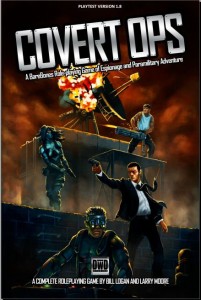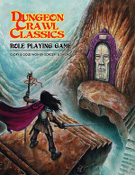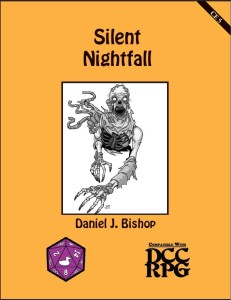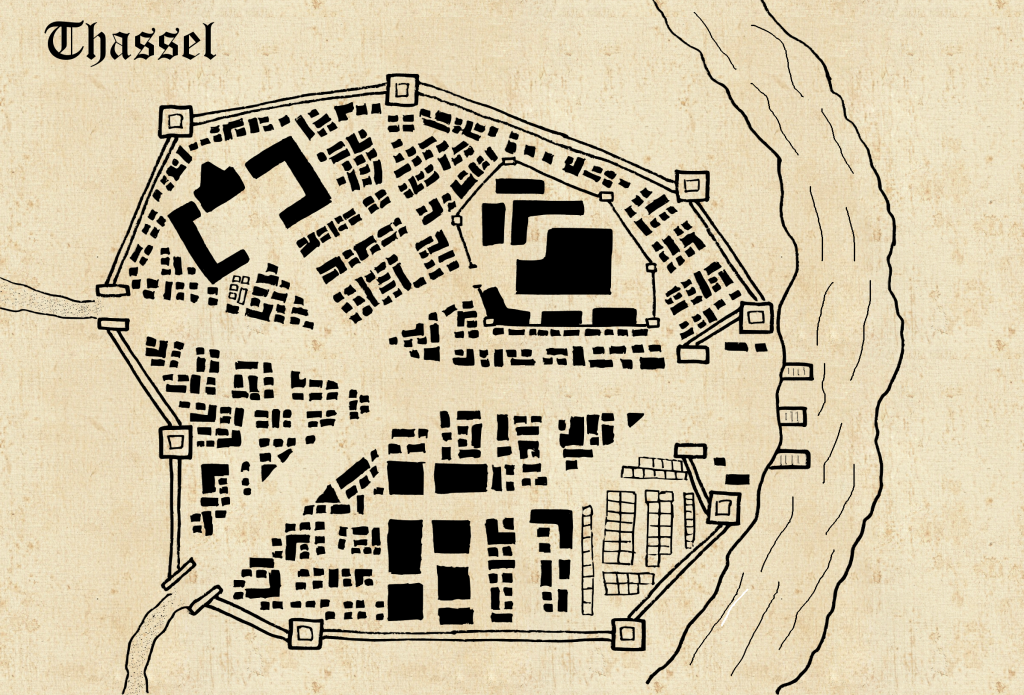 I recently received a pre-release look at the new Covert Ops game coming from DwD Studios, the same folks who brought us BareBones Fantasy. Covert Ops is a modern genre game covering everything from special agents to suave spies to paramilitary ops. Mechanically it uses the same d00Lite system BareBones Fantasy did, just with modern trappings and roles. If you have played BareBones Fantasy, Covert Ops will come easily to you.
I recently received a pre-release look at the new Covert Ops game coming from DwD Studios, the same folks who brought us BareBones Fantasy. Covert Ops is a modern genre game covering everything from special agents to suave spies to paramilitary ops. Mechanically it uses the same d00Lite system BareBones Fantasy did, just with modern trappings and roles. If you have played BareBones Fantasy, Covert Ops will come easily to you.
Covert Ops – Core Rulebook
If you have not used the d00Lite system, it is easy to pick up. It uses only d10s. Things like damage rolls and such are notated as 1D, 2D, 4D, etc, etc. In the case of 2D one would roll 2d10 and sum the results. Checks are done by rolling 2 d10s as percentile dice, a successful check being a result lower than a certain percentage. If you roll two of the same number and you were under the percentage you get a critical success. If you roll two of the same and you were over the percentage you get a critical failure.
A character, or operative, has four abilities. Strength, Dexterity, Logic, and Willpower. Each is represented by a percentile score. Over the course of the character’s advancement the score can be raised. If there is not a skill when needing to make a success or failure check then the most relevant ability can be used to make a check against.
Similar to BareBones Fantasy, Covert Ops uses a skill system to represent training an operative has. This helps define the character, yet gives one a lot of flexibility to mold them mechanically the way you want. There are ten skill areas – academic, leader, detective, martial artist, medic, pilot, scout, soldier, technician, and thief.
Covert Ops includes a hero point system referred to as bones. These bones act as a means of allowing a player to shape the game a bit by spending a bone to possibly boost a roll, narratively describe something really cool, etc.
As I noted in my look at BareBones Fantasy, I appreciate that as a GM a Golden Rule is included. “The GM is in charger!” Some of the modern rule systems in a variety of different genres are highly codified and I think it is good to state this Golden Rule up front. It both helps the GM be more comfortable making rulings in the gray areas and helps convey the point the players need to trust the GM.
The Operatives section of the book covers the creation of your character. It is well presented and makes creating an operative very clear. It walks you through the creation process step-by-step, seven in total. Tables are provided if you want to randomly roll or you can choose yourself from the tables. Ability scores can be rolled or chosen from pre-rolled scores.
Origins help determine the character’s background and typically provides some statistical bonus for your character. Skill roles are most akin to a character class in other games. These come with special abilities, areas of focus, and specialization opportunities that also grant bonuses. Each skill gets one page in the rule book – so they are not overwhelming.
There is a section on outfitting your character which includes equipment allowances, equipment tables. The book also includes several methods for handling lifestyles, common items, and expensive items.
Covert Ops uses a moral code for an alignment mechanic. Instead of lawful or evil or good or bad, there is a list of five central aspects or character traits. For each row you decide whether your character is somewhat, very, or totally those traits. For example, ‘somewhat kind’ or ‘totally selfish’
Operatives increase in talent as they earn development points (DP) over the course of play. These can be stockpiled or used right away to advance a character. A list of things that grant a development point are included – things like surviving the mission, using your abilities or skills, or for good role-playing. Earned points can be used to increase ability scores, skills, and other such things.
Rules for a Base of Operations for the operatives are also included. Once characters reach a rank of four they are eligible to receive funds from Command for a headquarters of their own. Establishing a base size, features, upgrades, and more are included in this section. An interesting facet for a modern game of espionage and tactical teams.
The next section goes into the game guidelines. Everything from actions, healing, movement, vehicles, and more. This section covers the specifics of the d00Lite system in each of these topics. One of the features I like about the d00Lite system is how multiple actions work. Essentially even at your first rank you have the option of making multiple actions. The first is made at your normal check level, then the second gets a -20% penalty to the skill check. This makes things progressively harder the more actions you take.
The GM Guidelines section helps assist the GM with several of the subjective areas of the game. Rules of thumb for modifiers to chances of success, other ways to get hurt, breaking things, etc. Subjects that will come up in a modern game that fall out of the normal vein of things.
Security is an area of importance in a modern genre game. After all, what big bad evil guy is not going to protect their hideout with some security system or trap. A stats system has been developed to help a GM write-up a security system and assign a rank to it. The higher the rank the harder it is to both detect it and to disable it. Various components of a security system are also included on a table to help with creating one from scratch.
The GM Guidelines section wraps up with information and tips on creating NPCs, master villains, enemy organizations and even code names for operations! All of the information in this section is sure to get a GM new to Covert Ops or the modern genre in general started with lots of great ideas.
The Covert Ops rulebook ends with a write-up on Sector. Sector is the mysterious international paramilitary and espionage organization that seeks to keep terrorist plots at bay. Its headquarters in various parts of the world are described as well as some of the ranking structure of the organization. This is a ready-made good guy organization that operates in the gray area of other nations military and government powers. This is definitely an asset to the GM getting started with a modern genre game by providing a backdrop for the operatives to work for and with.
That wraps up what is inside the Covert Ops rulebook. The PDF copy I received is well laid out and clearly bookmarked. It has a very clean feel to it. Khairul Hisham did the illustrations for the book and did an excellent job. There are a lot of great illustrations sprinkled throughout the book to keep your creative mind going while you get up to speed on the rules.
 Covert Ops – Game Master’s Operation Manual
Covert Ops – Game Master’s Operation Manual
DwD Studios likes to keep their games on the rules-light side and they do a good job of that. Of course sometimes there are more options you want to cover or present as an option. That is where the Game Master’s Operation Manual comes in. This is a supplement for Covert Ops that covers options. These are all optional rules to the Covert Ops game and are not required.
This book is broken up into three main sections – one for operatives, one for game guidelines, and one for game mastery. This additional book is also well laid out and has a variety of illustration sources credited.
This book provides a plethora of optional rules and suggestions to make your Covert Ops game successful. It even includes a ‘Learn the Lingo’ section to help you really get the feel of a modern paramilitary espionage game.
Summary
Covert Ops is a wonderful application of the d00Lite system to a modern paramilitary ops or espionage based game. The system is relatively easy to pickup and get people started playing. It has a tremendous amount of flexibility with its skill-as-role system to help players tailor just the character they want.
In addition to a solid character and action mechanic resolution system, the extras included with the rulebook for handling vehicles, security systems, a myriad of equipment, plus an organization to back all of your characters operations right from the start.
The system complements itself well to BareBones Fantasy in that if you learn the d00Lite system for one genre your players will easily be able to participate in the other. Start playing and BareBones Fantasy and your players can pick right up with Covert Ops or vice versa.
DwD Studios is once again prepared to release a ruleset that covers a complex genre with ease!







